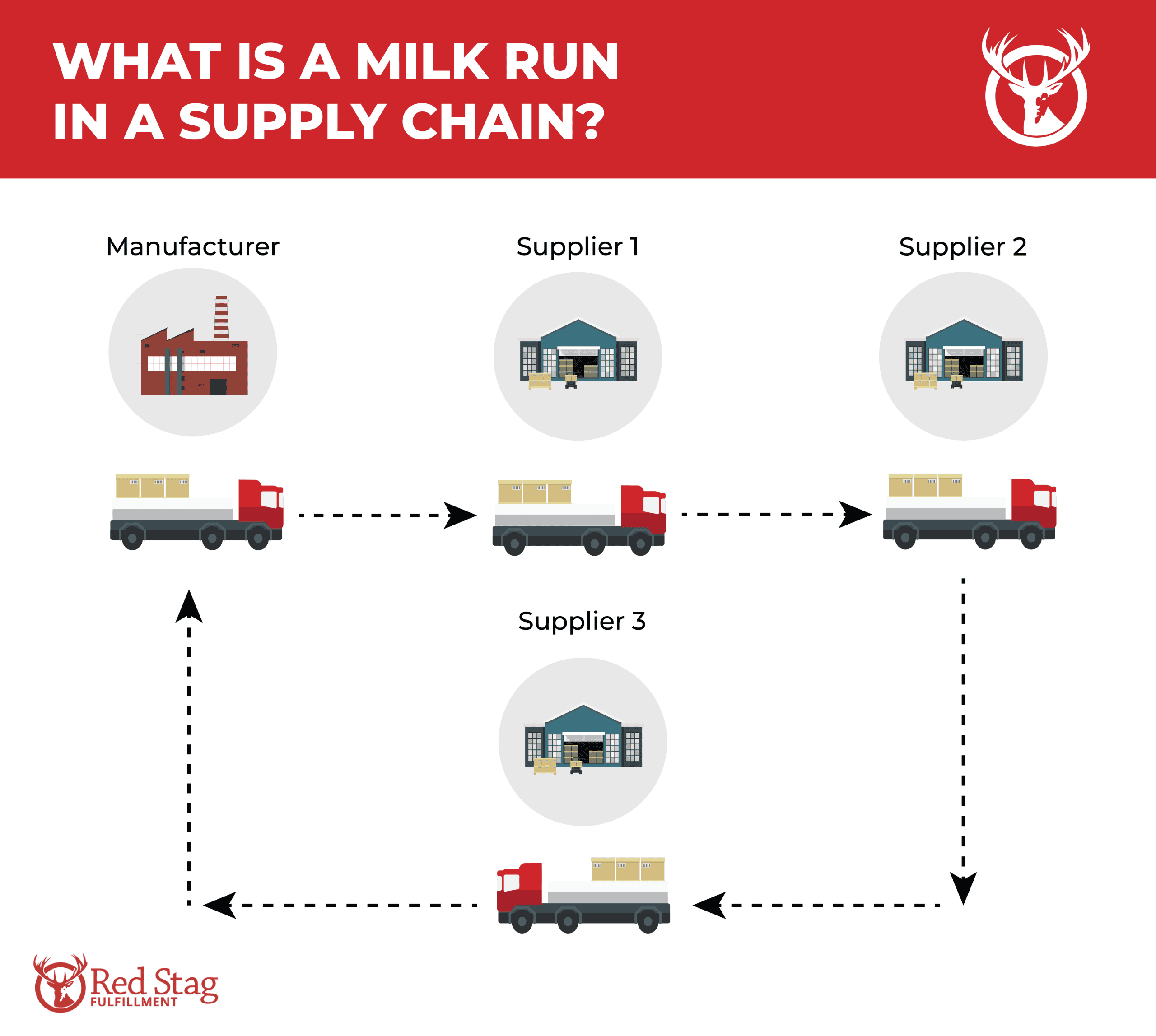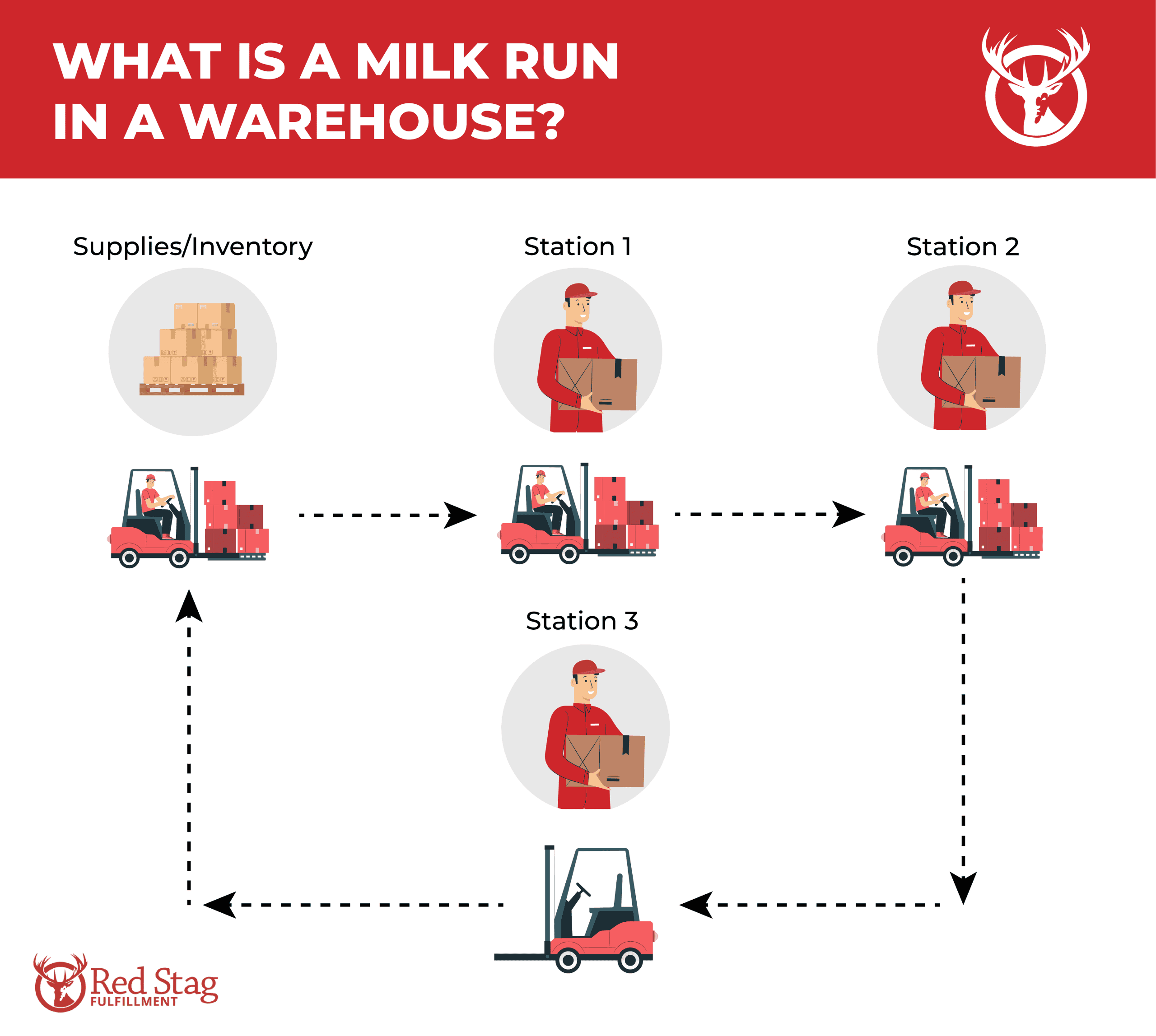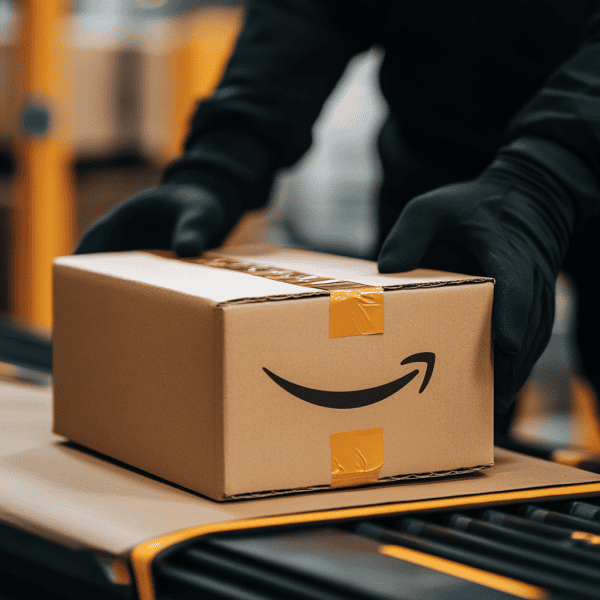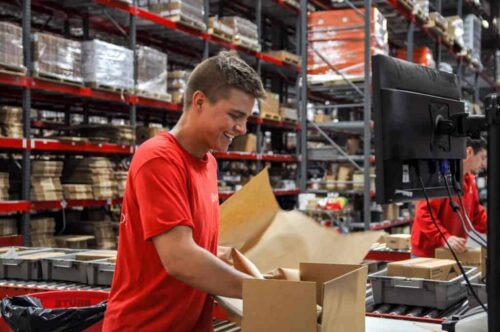In logistics, when your station needs supplies or you’re moving goods for storage in a new location, those actions must happen quickly.
That’s when a “milk run” occurs—getting people what they need when needed so that the work can continue.
While the local milk runs delivering dairy farm products door-to-door are largely a thing of the past, the milk run still thrives in logistics and supply chain operations. We compiled a short history of these runs, what logistics pros mean when they use the term, and how they contribute to smart operations.
Similar efforts are common in all kinds of warehouse management operations today, from warehouses like ours to big distribution settings and small local deliveries via the dairy industry. It’s all about optimizing your work and resource utilization.
Milk run definition and origin
The term milk run comes from milk delivery. Milkmen would drive a milk delivery truck, bringing milk to people’s homes and picking up empty bottles. Local milk runs also described trains that would stop at multiple farms to pick up cans of fresh milk to take to a central dairy for processing.

Local milk runs are common throughout rural areas with regional dairy procurement operations. Delivery people would have a set route and customer list, often managed by paper and visual signs (like leaving milk bottles on doorsteps), though today, these have pivoted to milk run systems.
In World War II, pilots referred to low-risk sorties as milk runs. The term also generally describes a route with many stops. For example, a transportation route is a milk run if it has frequent stops, often in small towns.
The milk run concept for logistics professionals takes this same concept and applies it to warehouses, distribution centers, and other large shipping and fulfillment environments. You can use it to mean nearly any move where someone collects goods from multiple stops and brings them to a final location.
Let’s dive in a little deeper.
What is milk run meaning in logistics and warehousing?

The milk run meaning for logistics and warehousing is a process for inbound deliveries to warehouses or distribution centers.
These deliveries can involve internal or external supply chains.
It’s easiest to explain the process with an example.
Let’s say that many different growers in one region supply wheat to a mill that makes flour. Each farm could send a delivery truck with a load of grain to the mill each day. That’s a pretty standard supply chain operation.
In local milk run logistics, however, a truck would go from the mill to the farms. At each stop on the route, the truck picks up wheat from a different grower. If each farmer only has a partial load to deliver, this is a more efficient way to collect the grain.

Milk runs can also be part of internal operations. Sometimes, they don’t even involve delivery trucks. Let’s take the example of a heavy equipment manufacturing facility. Several sections of the facility fabricate different parts of the machinery. Another team does the assembly.
Someone from each fabrication department could deliver the finished pieces to the assembly section. However, sending a driver to the different sections to load and transport all the parts to the assembly area is probably more efficient. In this situation, one driver takes the place of many, and each department’s workforce can focus on fabrication.

An Amazon example
A milk run Amazon’s employees perform usually involves driving packages from one station to another. That helps with sorting, packing, and loading trailers. The driver is helping the station by getting goods and other necessary items to keep working. After the pandemic, employees say that this more often is the delivery of sanitization gear and cleaners because stations run out throughout the day.

Why are these runs beneficial?
As the examples above demonstrate, a milk run can be a more efficient way to handle logistics. But they do take planning.
If the route involves products from different companies, you need an agreement about cost-sharing and other aspects of the cooperative delivery arrangement. Once the group settles these issues, this delivery method can save time and money for everyone by pooling operation costs and resources.
Receiving operations also benefit from milk runs.

In the mill example, instead of processing a dozen deliveries from different farms, the mill can get a full wheat delivery from just one truck.

In the internal example above, the assembly operations only have one delivery to track rather than running down parts deliveries from multiple fabrication departments.
In the internal example above, the assembly operations only have one delivery to track rather than running down parts deliveries from multiple fabrication departments.
Warehouses and manufacturing facilities operate like assembly lines. Milk runs keep those functioning by filling gaps when a small quantity of a product or part is needed immediately. It’s a good protection and risk-control tool for your supply chain management.
How these operations streamline third-party logistics
Milk runs are an excellent example of lean management principles applied to logistics. At Red Stag Fulfillment, we always look for ways to apply agile principles. These cutting-edge management principles allow us to pivot quickly to meet changing circumstances.

For example, we can re-route some partner shipments to alternate carriers if carrier capacity issues threaten to slow down delivery for many order fulfillment warehouses.
Logistics is a dynamic field. Demand can change quickly, so your 3PL should be ready to change just as fast. Red Stag Fulfillment helps our clients apply lean principles to inventory management to maximize reliability while minimizing the capital needed to be fully stocked. There are multiple tactics we can employ to protect your operations and these runs are just one option.

Curious how can your ecommerce fulfillment benefit from agile logistics? Want to know what type of inbound logistics make sense for your eCommerce business?
Reach out to Red Stag Fulfillment—we’d love to help you figure it out.
The Quick Milk Run FAQs

What does ‘going on a milk run’ mean?
Someone going on a milk run is traveling a short or pre-defined route to pick up and drop off items at multiple designated stops. You might be delivering supplies to multiple stations, shifting inventory between locations, or delivering milk to people’s homes.
If everyone in your neighborhood had the same delivery driver for that online shopping you do, their route could be considered a local milk run.










Why is it called the milk run?
Milk runs have recurring, pre-defined routes, just like the routes milk delivery people used to make. Those early morning deliveries, or milk runs, would ensure people had what they needed for breakfast and their day. In logistics, these runs are all about getting people what they need when they need it.










What is the advantage of the milk run method?
Milk runs eliminate partial truckloads and other shipments that become costly at great distances. Locally, they optimize how you can use goods in real-time. That way, you only buy needed inventory instead of overstocking.
For lean manufacturing operations, there’s work consolidation by picking up raw materials from different suppliers to minimize time and travel. Milk run logistics ensures uninterrupted inventory replenishment when supplying raw materials and semi-finished products to production lines. It improves material handling efficiency and often needs a few carts or forklifts.










